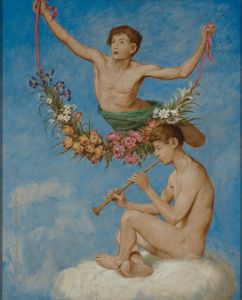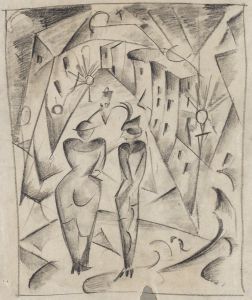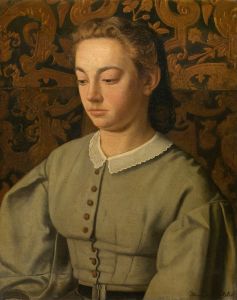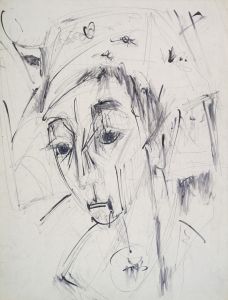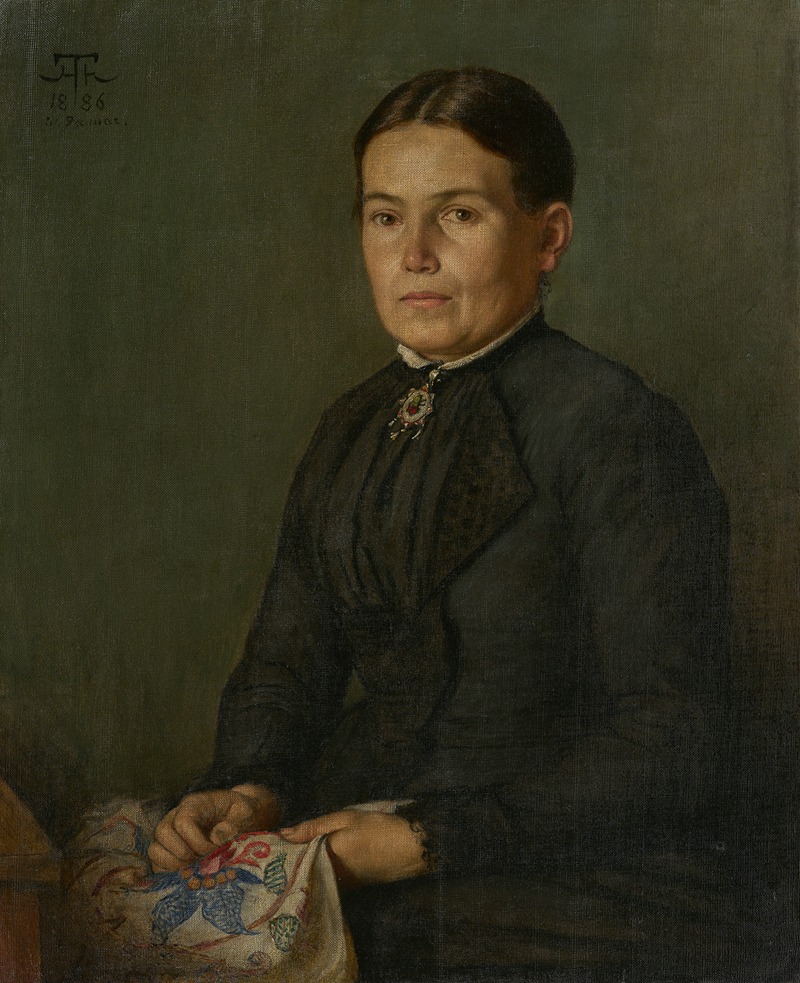
Portrait of the Artist’s Sister Agathe
A hand-painted replica of Hans Thoma’s masterpiece Portrait of the Artist’s Sister Agathe, meticulously crafted by professional artists to capture the true essence of the original. Each piece is created with museum-quality canvas and rare mineral pigments, carefully painted by experienced artists with delicate brushstrokes and rich, layered colors to perfectly recreate the texture of the original artwork. Unlike machine-printed reproductions, this hand-painted version brings the painting to life, infused with the artist’s emotions and skill in every stroke. Whether for personal collection or home decoration, it instantly elevates the artistic atmosphere of any space.
Hans Thoma was a German painter born on October 2, 1839, in Bernau in the Black Forest, and he became one of the most prominent figures in the German art scene during the late 19th and early 20th centuries. Thoma is known for his landscapes, portraits, and mythological scenes, often reflecting a blend of realism and romanticism. One of his notable works is "Portrait of the Artist’s Sister Agathe."
"Portrait of the Artist’s Sister Agathe" is a painting that exemplifies Thoma's skill in portraiture and his ability to capture the essence of his subjects with sensitivity and detail. The painting features Agathe, Thoma's sister, and provides insight into the personal life and relationships of the artist. Thoma's portraits often reveal a deep connection with his subjects, and this work is no exception, showcasing his ability to convey emotion and character through his brushwork.
The painting is characterized by its realistic depiction of Agathe, highlighting Thoma's attention to detail and his mastery of capturing human features. The use of light and shadow in the portrait adds depth and dimension, bringing Agathe's presence to life on the canvas. Thoma's choice of color palette is typically subdued, focusing on natural tones that enhance the lifelike quality of the portrait.
Hans Thoma's work, including this portrait, is often associated with the German Romantic movement, although he developed a unique style that set him apart from his contemporaries. His art reflects a deep appreciation for nature and the human form, often infused with a sense of tranquility and introspection. Thoma's ability to blend realism with a touch of romanticism is evident in "Portrait of the Artist’s Sister Agathe," where the viewer can sense both the physical likeness and the emotional depth of the subject.
Throughout his career, Thoma received significant recognition for his contributions to art. He held various prestigious positions, including serving as the director of the Kunsthalle Karlsruhe, and his works were exhibited widely, gaining him a reputation as a leading figure in German art. Thoma's influence extended beyond his lifetime, as his works continued to be celebrated for their technical skill and emotional resonance.
"Portrait of the Artist’s Sister Agathe" remains an important piece within Thoma's oeuvre, offering a glimpse into the personal world of the artist while showcasing his exceptional talent in portraiture. The painting is a testament to Thoma's ability to capture the essence of his subjects, making it a valuable contribution to the study of 19th-century German art.
Hans Thoma passed away on November 7, 1924, in Karlsruhe, Germany, leaving behind a legacy of artworks that continue to be admired for their beauty and emotional depth. His portraits, including that of his sister Agathe, remain significant for their artistic merit and their ability to convey the human experience with sincerity and grace.









